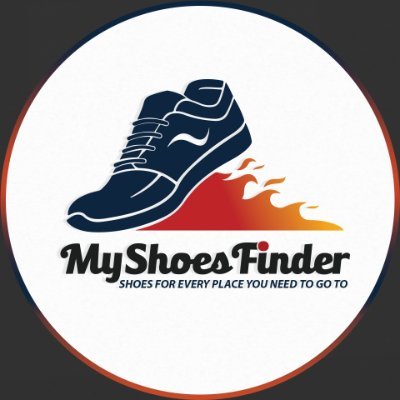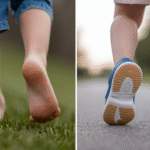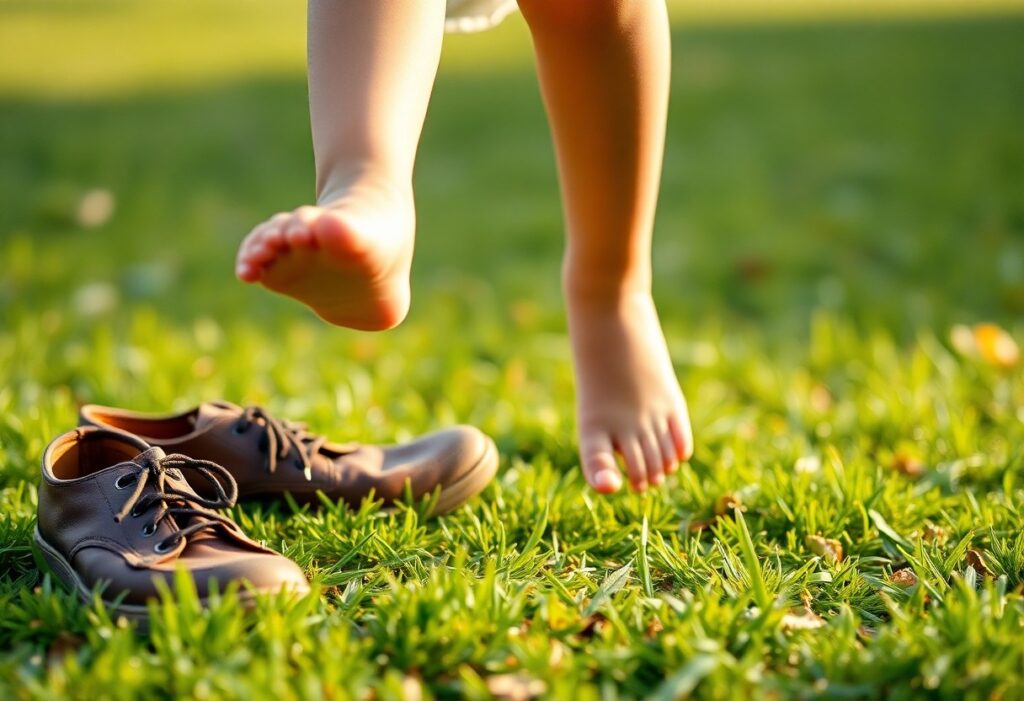
When considering the development of your child’s feet, it’s crucial to understand the orthopedic implications linked to barefoot footwear. This innovative type of footwear can promote natural foot growth, which may lead to increased muscle strength and enhanced balance. However, it is vital to be aware of the potential risks for injury if your child’s feet are not fully accustomed to the minimal support that such shoes provide. Therefore, assessing the benefits of improved proprioception and optimized foot mechanics against the possible dangers of instability and injury is essential. Staying informed will empower you to make thoughtful decisions that enhance your child’s foot health and overall well-being.
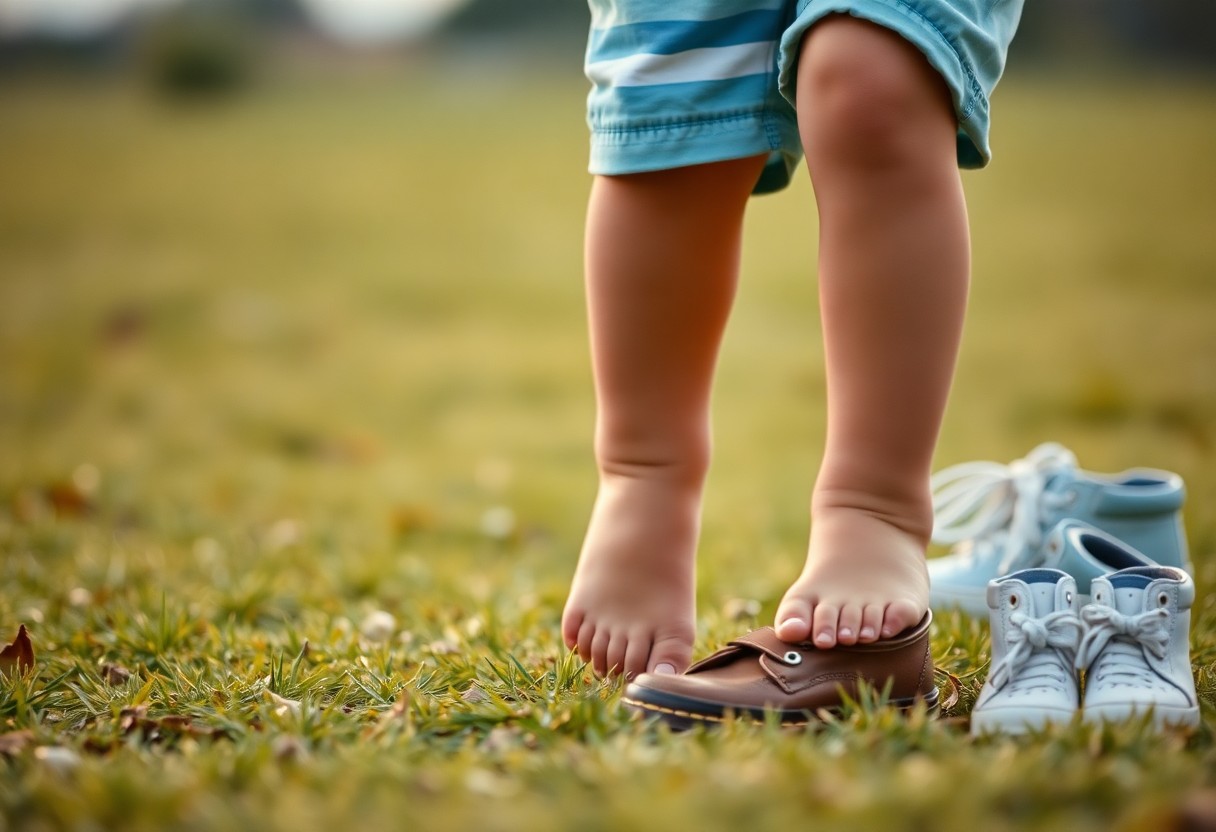
Unlocking the Benefits of Minimalist Footwear for Optimal Children’s Foot Health
Extensive research has demonstrated that minimalist footwear can profoundly influence pediatric foot development by encouraging natural foot mechanics and movement patterns. Children who regularly wear these types of shoes typically show enhanced foot strength and flexibility compared to those in conventional footwear. Moreover, exposure to varied terrains, which is common when using minimalist shoes, plays a significant role in developing proprioception skills—vital for overall motor development during these critical formative years. This exposure not only helps in physical growth but also boosts confidence in navigating different environments.
Investigating Longitudinal Arch Development in Children: Insights from a Three-Year Study
A recent longitudinal study spanning three years provided compelling insights into the formation of the longitudinal arch in children who wore minimalist footwear. The results indicated that children in this category displayed more defined arches, emphasizing the potential benefits of these shoes in promoting natural biomechanics. These findings resonate with a growing emphasis on fostering optimal foot development through footwear that does not inhibit growth—a crucial factor in supporting healthy overall physical development and preventing future orthopedic issues.
Examining Toe Splay: A Detailed Comparison Between Minimalist and Conventional Footwear
The concept of toe splay, which refers to the natural spreading of toes during weight-bearing activities, was notably more pronounced in children who wore minimalist shoes compared to those in traditional footwear. Research assessing forefoot width revealed that toe splay increased by as much as 15%, which facilitates improved grip, balance, and overall foot functionality. This enhanced toe splay is critical for maximizing the effectiveness of the foot during various activities, making it an essential element in maintaining optimal foot health and performance.
Examining Toe Splay: A Detailed Comparison Between Minimalist and Conventional Footwear
| Type of Shoe | Average Toe Splay (mm) |
|---|---|
| Minimalist Footwear | 12-15 |
| Conventional Footwear | 8-10 |
Measuring toe splay is essential for understanding how different types of footwear impact children’s foot development. Research suggests that minimalist shoes promote an average toe splay of 12-15 mm, while conventional shoes restrict this splay to a mere 8-10 mm. This difference is significant, as increased toe splay correlates with enhanced stability and effective push-off during movement. By choosing footwear that supports natural splay, you can facilitate improved motor skills and overall foot functionality in your growing child, ultimately benefiting their physical activity and health.
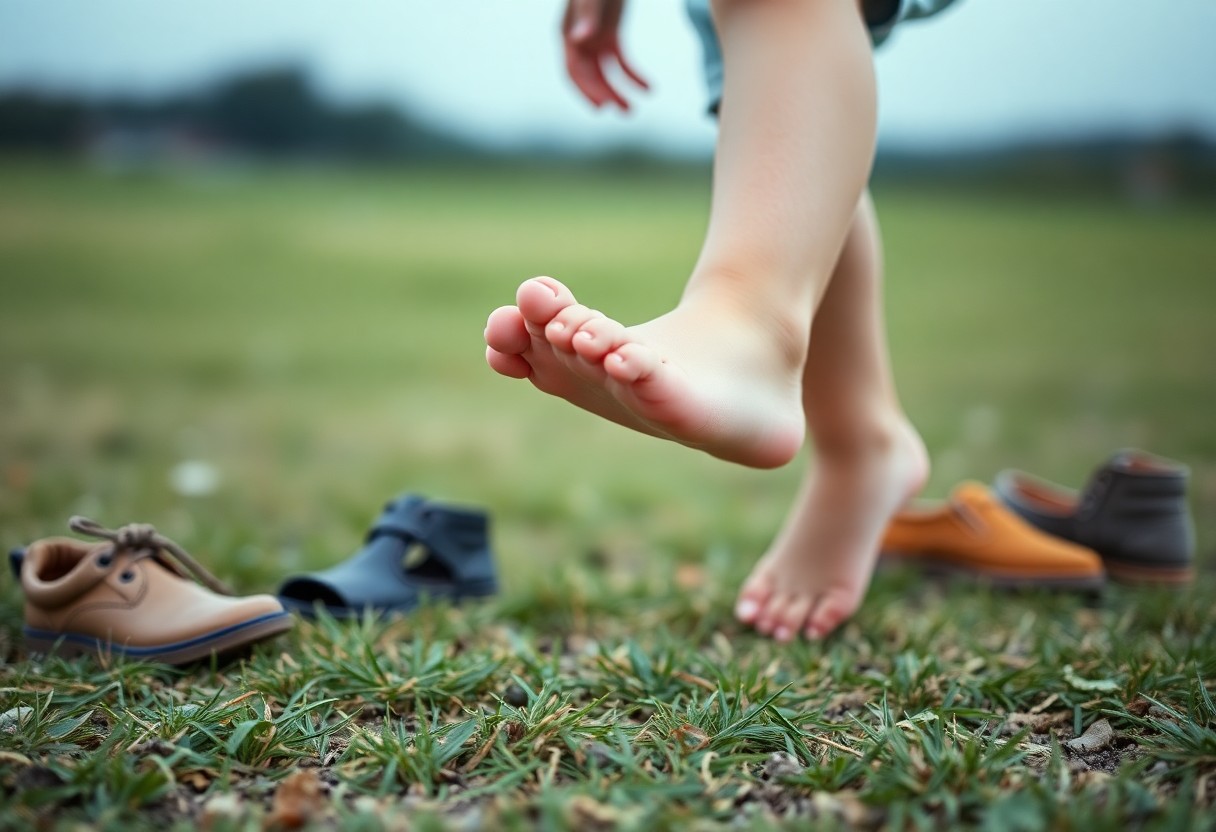
Making Informed Choices in Pediatric Footwear: Comprehensive Clinical Protocols
Following established clinical protocols when selecting pediatric footwear is essential for fostering healthy foot development in children. Regular evaluations of children’s shoes can help identify issues arising from improper fit or unsuitable styles. Creating a thorough checklist for assessing footwear can streamline this process, factoring in critical elements like heel height, arch support, and toe box width. Educating parents and caregivers on the selection and maintenance of appropriate footwear can significantly enhance the chances of nurturing strong foot health as children grow and develop.
Guidelines for Age-Appropriate Footwear Transitions: Progressing from First Walkers to Adolescents
Transitioning from shoes specifically designed for first walkers to those suitable for adolescents is a gradual process that necessitates careful consideration of your child’s ongoing foot growth and developmental milestones. For infants, lightweight and flexible shoes that promote natural movement are ideal, while toddlers benefit from footwear that offers a secure fit and additional support as they gain confidence in their walking abilities. As children approach the teenage years, selecting shoes that balance style with necessary orthopedic support becomes crucial, ensuring the continued health of their developing feet while also meeting their aesthetic preferences.
Implementing Effective School Footwear Policies: Aligning with WHO Recommendations
Establishing school footwear policies that align with WHO guidelines is vital for promoting foot health among students. By ensuring that children wear proper and supportive shoes suited for their physical activities, schools can facilitate long-term orthopedic benefits. Encouraging parents to select footwear that provides stability and protection can significantly reduce the risk of injuries during recess and physical education classes. This proactive approach not only supports healthy growth but also instills in children and families the importance of making informed footwear choices that prioritize health and safety.
The WHO advocates for policies that promote appropriate footwear to mitigate foot-related health issues among children. Schools that adopt these guidelines can establish mandatory standards for footwear that is both functional and conducive to healthy foot development. Engaging parents in discussions about suitable footwear choices and offering educational resources can enhance community awareness and involvement. A structured framework can also facilitate regular inspections of footwear to ensure compliance with standards, ultimately contributing to a healthier school environment for all students.
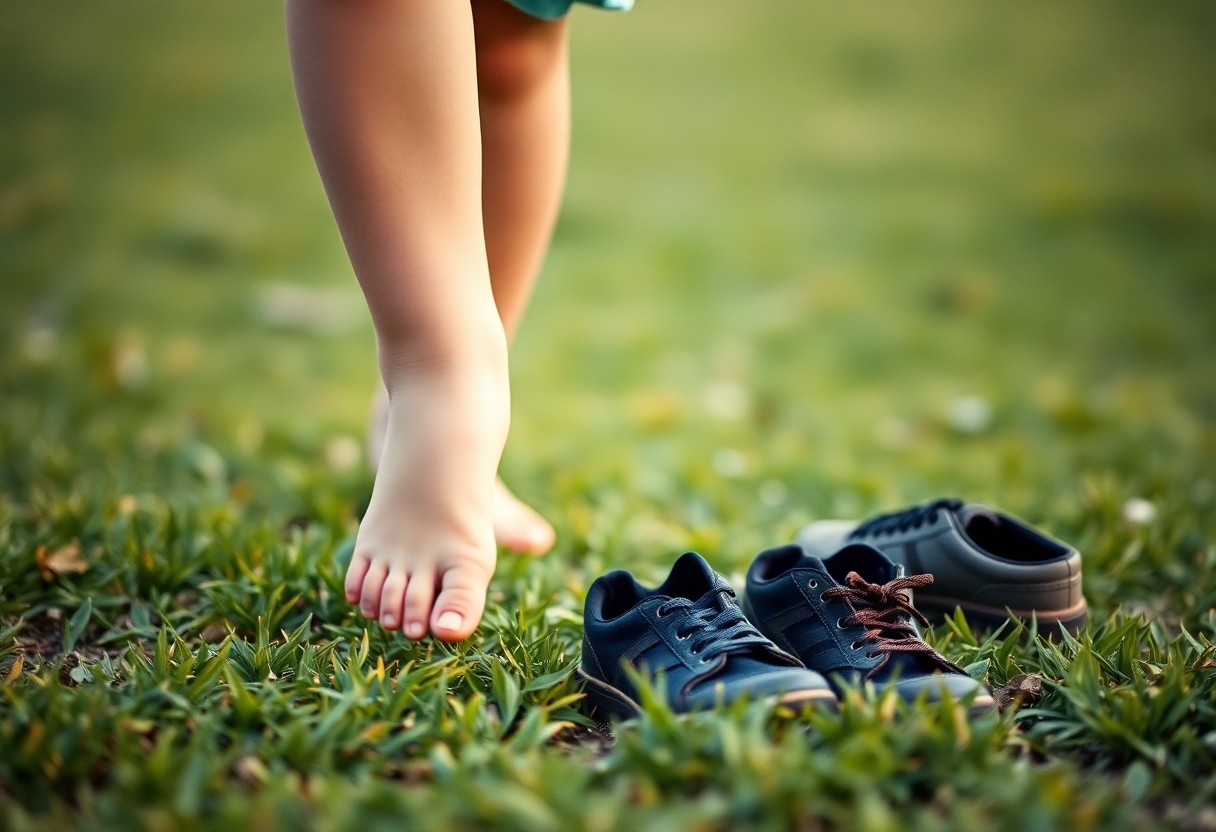
Emphasizing Safety in Footwear Design: Crucial Considerations for Parents
Ensuring safety in footwear design encompasses multiple critical factors, such as padded interiors, structural integrity, and compliance with appropriate performance standards. It is essential to select footwear that not only supports your child’s natural foot development but also minimizes risks associated with common outdoor activities. An ideal shoe should prioritize shock absorption, provide a strong grip to prevent slips, and include features that consider various environmental factors, ensuring your child’s feet are well protected and comfortable across different terrains and conditions.
Evaluating Puncture Resistance: Adhering to Standards from Leading Footwear Brands
Puncture resistance is an essential safety feature for children’s footwear, particularly for those who enjoy outdoor exploration and play. Top footwear brands typically adhere to rigorous testing standards, including ASTM F891-21, to assess how effectively a shoe can withstand sharp objects. These stringent tests ensure that your child’s shoes can adequately protect their feet from potential hazards, providing parents with peace of mind during playtime and outdoor adventures, knowing that their children are safe.
Understanding Thermal Insulation: Essential Features for Winter Footwear
When selecting winter footwear, prioritizing thermal insulation is critical for keeping your child’s feet warm and preventing frostbite. The design should incorporate materials with a high thermal resistance rating, enabling shoes to maintain an optimal internal temperature. Look for thermal insulation features that provide both comfort and protection, ensuring that your child remains active and cozy even in the coldest weather conditions, allowing for enjoyable outdoor activities without discomfort.
As you evaluate thermal insulation for winter models, consider various features that can enhance warmth. Insulating materials such as Thinsulate or fleece linings are vital, as they create barriers against frigid temperatures while maintaining breathability. Seek footwear that integrates moisture-wicking properties to keep feet dry, as excess moisture can lead to heat loss. A well-constructed winter shoe should also provide a critique of its insulation performance, typically indicated by a thermal rating, ensuring your child can enjoy winter activities without discomfort or risk of cold-related injuries.
Recognizing the Importance of Barefoot Footwear for Pediatric Health and Development
In summary, it is imperative to acknowledge that the adoption of barefoot footwear within pediatric populations carries various orthopedic implications that can significantly influence your child’s foot development and overall physical health. By promoting natural foot movement and growth, these shoes can positively contribute to biomechanics and muscle development. However, it is equally essential to ensure proper usage, allowing your child to transition gradually to mitigate discomfort or injury. Ultimately, understanding the balance between the benefits and potential risks will empower you to make informed footwear choices tailored to your child’s specific needs.
Frequently Asked Questions About Barefoot Footwear: Insights for Parents
Q: What benefits does barefoot footwear provide for children?
A: Barefoot footwear is specifically crafted to replicate the natural shape and function of the foot, facilitating improved foot mechanics. For children, this can lead to the development of strong foot muscles, enhanced balance, and improved proprioception. Additionally, these shoes encourage natural foot movement and a reduced reliance on cushioned support, potentially resulting in better alignment and biomechanics as they grow, which is crucial for their physical development.
Q: What potential risks should be considered when children wear barefoot footwear?
A: While barefoot footwear can offer numerous benefits, some risks must be acknowledged. Children who transition too abruptly to barefoot shoes may experience discomfort or an increased risk of injury due to insufficient cushioning and support, particularly if they are accustomed to traditional footwear. It is essential for parents to ensure that their child gradually acclimates to barefoot footwear, allowing ample time for their feet to adapt. Additionally, monitoring for any signs of pain or foot issues during this transition is advisable to prevent complications.
Q: How can parents determine if barefoot footwear is appropriate for their child?
A: Parents should assess their child’s foot development, activity levels, and any existing orthotic requirements before selecting barefoot footwear. Consulting with a pediatrician or a podiatrist can provide valuable insights into the child’s unique foot health and needs. Observing the child’s comfort level, foot flexibility, and any signs of discomfort when wearing these shoes can also assist in the decision-making process. Beginning with short periods of wear and gradually increasing usage can help determine suitability and comfort, ensuring an informed choice.
The Article Orthopedic Implications of Barefoot Footwear for Pediatric Populations appeared first on My Shoes Finder
The Article Barefoot Footwear and Its Orthopedic Impact on Children Was Found On https://limitsofstrategy.com



